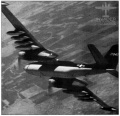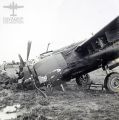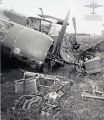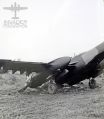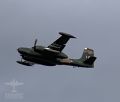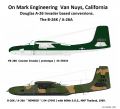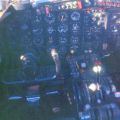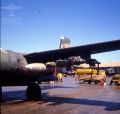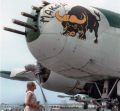Category:B-26K: Difference between revisions
Jump to navigation
Jump to search
(Blanked the page) |
|||
| Line 1: | Line 1: | ||
Latest revision as of 16:11, 13 July 2020
Subcategories
This category has the following 3 subcategories, out of 3 total.
6
B
- B-26K Crew (23 P, 52 F)
- B-26K-1 (40 P)
Pages in category "B-26K"
The following 58 pages are in this category, out of 58 total.
6
- 603rd Special Operations Squadron
- 605th Air Commando Squadron
- 606th Air Commando Squadron
- 609th Special Operations Squadron
- 64-17640
- 64-17641
- 64-17642
- 64-17643
- 64-17644
- 64-17645
- 64-17646
- 64-17647
- 64-17648
- 64-17649
- 64-17650
- 64-17651
- 64-17652
- 64-17653
- 64-17654
- 64-17655
- 64-17656
- 64-17657
- 64-17658
- 64-17659
- 64-17660
- 64-17661
- 64-17662
- 64-17663
- 64-17664
- 64-17665
- 64-17666
- 64-17667
- 64-17668
- 64-17669
- 64-17670
- 64-17671
- 64-17672
- 64-17673
- 64-17674
- 64-17675
- 64-17676
- 64-17677
- 64-17678
- 64-17679
Y
Media in category "B-26K"
The following 200 files are in this category, out of 222 total.
(previous page) (next page)- 603rd Plane dropping practice bomb.jpg 1,338 × 933; 1.17 MB
- 609Sign.jpg 560 × 836; 95 KB
- 609th B26.jpg 560 × 398; 85 KB
- 609th Flight line 2.jpg 2,673 × 1,849; 4.51 MB
- 609th Flight Line.jpg 2,683 × 1,784; 4.49 MB
- 609th SOS Plane.png 1,080 × 725; 1.22 MB
- 64-17640 (2).jpg 450 × 251; 23 KB
- 64-17640 (3). WM.jpg 625 × 412; 121 KB
- 64-17640 2.jpg 786 × 762; 189 KB
- 64-17640 at South Dakota.jpg 1,000 × 666; 313 KB
- 64-17640 c1964.jpg 1,430 × 441; 322 KB
- 64-17640(1).RFA.jpg 801 × 642; 123 KB
- 64-17640(3).jpg 2,688 × 1,230; 1.77 MB
- 64-17640-1.jpg 1,024 × 681; 481 KB
- 64-17640-10.jpg 1,166 × 417; 74 KB
- 64-17640-2.jpg 800 × 277; 56 KB
- 64-17640-3.jpg 648 × 327; 60 KB
- 64-17640.jpg 1,200 × 675; 770 KB
- 64-17640.RFA.jpg 799 × 640; 127 KB
- 64-17641.jpg 1,626 × 798; 338 KB
- 64-17642 (2).jpg 2,000 × 1,318; 3.27 MB
- 64-17642 (3).jpg 1,482 × 510; 536 KB
- 64-17642.jpg 800 × 646; 105 KB
- 64-17643.jpg 750 × 515; 84 KB
- 64-17644. SHM.jpg 2,232 × 1,322; 2.23 MB
- 64-17644.Cachita.jpg 1,464 × 951; 1.01 MB
- 64-17645 at Hulburt Field.jpg 960 × 479; 131 KB
- 64-17645 b-26knhatrang003.jpg 1,800 × 1,070; 781 KB
- 64-17645 b-26knhatrang005.jpg 1,799 × 1,072; 755 KB
- 64-17645 b-26knhatrang006.jpg 1,798 × 1,145; 665 KB
- 64-17645 b-26knhatrang007.jpg 1,798 × 1,254; 912 KB
- 64-17645 b-26knhatrang008.jpg 1,798 × 1,145; 624 KB
- 64-17645 b-26knhatrang009.jpg 1,798 × 1,145; 582 KB
- 64-17645 b-26knhatrang010.jpg 1,798 × 1,263; 916 KB
- 64-17645 b-26knhatrang011.jpg 1,798 × 1,145; 620 KB
- 64-17645 b-26knhatrang012.jpg 1,800 × 1,179; 494 KB
- 64-17645 b-26knhatrang018.jpg 1,799 × 1,089; 816 KB
- 64-17645 in the Congo.jpg 2,240 × 951; 1.51 MB
- 64-17645 loaded (2).jpg 380 × 480; 74 KB
- 64-17645 loaded.jpg 960 × 633; 217 KB
- 64-17645. 609 Battle damage.jpg 800 × 533; 174 KB
- 64-17645. Bunia, Congo. 1965.jpg 2,960 × 1,044; 1.32 MB
- 64-17645. NKP.jpg 1,200 × 747; 217 KB
- 64-17645. Rumdum.jpg 1,478 × 578; 527 KB
- 64-17645.jpg 1,280 × 915; 227 KB
- 64-17646 and crew.jpg 960 × 644; 221 KB
- 64-17646. Congo.jpg 1,484 × 780; 493 KB
- 64-17646. Maj. Sizemore.jpg 634 × 479; 115 KB
- 64-17646. Masaki. In the Congo. WM.jpg 2,238 × 1,347; 2.25 MB
- 64-17648. Nother Trucker. NKP.jpg 1,491 × 1,170; 1.32 MB
- 64-17648. RB-26K - 2.jpg 1,166 × 482; 283 KB
- 64-17648.jpg 2,000 × 1,402; 4.01 MB
- 64-17649 (2).jpg 623 × 443; 204 KB
- 64-17649 1.jpg 617 × 443; 120 KB
- 64-17649 on right.jpg 1,490 × 640; 705 KB
- 64-17649 Stanleyville. 1965.jpg 4,348 × 1,224; 4.21 MB
- 64-17649. (3).jpg 540 × 359; 105 KB
- 64-17651 at Davis Monthan.jpg 1,598 × 1,033; 271 KB
- 64-17651 engine start.jpg 788 × 371; 185 KB
- 64-17651 KAI(4).jpg 504 × 216; 34 KB
- 64-17651 with crew Chief Larry Clunk.jpg 1,087 × 888; 241 KB
- 64-17651. KAI (3).jpg 604 × 453; 89 KB
- 64-17651. KAI.jpg 3,072 × 2,304; 2.1 MB
- 64-17651. USAF.jpg 792 × 588; 190 KB
- 64-17651.(2).jpg 3,072 × 2,304; 618 KB
- 64-17651.jpg 1,392 × 919; 163 KB
- 64-17652 b-26knhatrang001.jpg 1,798 × 1,145; 950 KB
- 64-17652 b-26knhatrang002.jpg 1,798 × 1,249; 937 KB
- 64-17652 b-26knhatrang013.jpg 1,800 × 1,167; 412 KB
- 64-17652 b-26knhatrang014.jpg 1,799 × 1,072; 414 KB
- 64-17652 b-26knhatrang015.jpg 1,798 × 1,145; 416 KB
- 64-17652 b-26knhatrang017.jpg 1,798 × 1,181; 426 KB
- 64-17652 b-26knhatrang021.jpg 1,798 × 1,259; 328 KB
- 64-17652 b-26knhatrang022.jpg 1,798 × 1,145; 278 KB
- 64-17652 SDASM.jpg 550 × 364; 90 KB
- 64-17653 at Davis Monthan.jpg 1,610 × 1,036; 304 KB
- 64-17653-2.jpg 576 × 303; 67 KB
- 64-17653-3.jpg 576 × 341; 67 KB
- 64-17653-4..jpg 1,024 × 682; 251 KB
- 64-17653. Pima.jpg 1,023 × 570; 169 KB
- 64-17653.jpg 1,024 × 699; 283 KB
- 64-17653.Thompson.jpg 1,611 × 801; 266 KB
- 64-17654 1966.jpg 700 × 431; 95 KB
- 64-17654 64-17665.jpg 445 × 309; 56 KB
- 64-17654 69.jpg 750 × 500; 179 KB
- 64-17655 DM.jpg 1,024 × 660; 387 KB
- 64-17655 with 603.jpg 1,860 × 744; 1.06 MB
- 64-17655. Panama.jpg 851 × 584; 152 KB
- 64-17655. RB-26K.jpg 767 × 488; 105 KB
- 64-17655.RB-26K-1.jpg 768 × 504; 114 KB
- 64-17657 (2).jpg 1,024 × 768; 380 KB
- 64-17657 (3).jpg 595 × 445; 155 KB
- 64-17657.Crashed.jpg 1,268 × 779; 332 KB
- 64-17657.jpg 1,000 × 579; 167 KB
- 64-17660.Mothball.jpg 989 × 385; 215 KB
- 64-17660.NKP-1.jpg 960 × 704; 139 KB
- 64-17660.NKP-2.jpg 960 × 665; 111 KB
- 64-17660.NKP-3.jpg 960 × 711; 139 KB
- 64-17660.NKP-5.jpg 960 × 633; 164 KB
- 64-17660.NKP4.jpg 960 × 687; 169 KB
- 64-17660.USAF.jpg 1,937 × 790; 1.15 MB
- 64-17661, 64-17665, and 64-17660.jpg 2,954 × 1,198; 3.25 MB
- 64-17661.jpg 600 × 440; 136 KB
- 64-17662. At the end of Congo operations.jpg 2,244 × 1,092; 1.12 MB
- 64-17662. With Lt. Col. FarmerWM.jpg 717 × 968; 528 KB
- 64-17662.Congo.jpg 930 × 675; 228 KB
- 64-17662.Stanleyville.jpg 933 × 707; 236 KB
- 64-17664 NKP.png 1,080 × 718; 545 KB
- 64-17664-fuel.jpg 3,756 × 2,925; 4.19 MB
- 64-17664.Pacific.jpg 1,478 × 744; 816 KB
- 64-17666-2.jpg 448 × 221; 55 KB
- 64-17666-3.jpg 400 × 267; 26 KB
- 64-17666-4.jpg 1,280 × 806; 401 KB
- 64-17666-5.jpg 720 × 413; 138 KB
- 64-17666.Squadron.jpg 1,983 × 1,202; 1.03 MB
- 64-17667.jpg 1,102 × 745; 665 KB
- 64-17669.609th.jpg 2,926 × 1,626; 3.98 MB
- 64-17669.Germany.jpg 1,972 × 1,590; 1.28 MB
- 64-17670.Napalm.jpg 800 × 533; 273 KB
- 64-17670.USAF.jpg 1,007 × 666; 642 KB
- 64-17671-2.jpg 1,426 × 1,140; 648 KB
- 64-17671-3.jpg 450 × 241; 53 KB
- 64-17671-Thailand.jpg 396 × 291; 17 KB
- 64-17671.chopped.jpg 327 × 140; 28 KB
- 64-17671.DM.jpg 1,952 × 612; 674 KB
- 64-17671.jpg 355 × 200; 38 KB
- 64-17672-2.jpg 1,078 × 603; 358 KB
- 64-17672.6May65.jpg 4,264 × 2,032; 6.56 MB
- 64-17672.Apr65.jpg 1,633 × 741; 367 KB
- 64-17672.jpg 750 × 502; 123 KB
- 64-17672.May65.jpg 960 × 611; 257 KB
- 64-17673.crash-2.jpg 800 × 805; 282 KB
- 64-17673.crash-3.jpg 800 × 923; 367 KB
- 64-17673.crash.jpg 800 × 919; 274 KB
- 64-17673.jpg 1,600 × 1,180; 346 KB
- 64-17675.jpg 597 × 439; 165 KB
- 64-17676 and 64-17658(2nd).jpg 1,348 × 961; 950 KB
- 64-17676-2.jpg 1,800 × 1,161; 367 KB
- 64-17676-3.jpg 600 × 251; 70 KB
- 64-17676.1991.jpg 982 × 676; 283 KB
- 64-17676.C-GXTF.jpg 1,785 × 1,104; 986 KB
- 64-17676.jpg 3,600 × 2,103; 5.73 MB
- 64-17676.Musuem.jpg 1,800 × 1,200; 714 KB
- 64-17677 b-26knhatrang016 WM.jpg 1,798 × 1,277; 556 KB
- 64-17677. Batplane. NKP 1969.jpg 713 × 1,011; 438 KB
- 64-17677. Nov 1965.jpg 960 × 579; 128 KB
- 64-17677.jpg 1,619 × 871; 226 KB
- 64-17678.Feb73.jpg 1,219 × 644; 205 KB
- 64-17678.jpg 602 × 447; 104 KB
- 64-17679-1.jpg 1,024 × 768; 167 KB
- 64-17679-2.jpg 1,024 × 768; 252 KB
- 64-17679-4.jpg 2,048 × 1,536; 793 KB
- 64-17679-5.jpg 1,338 × 1,004; 1.2 MB
- 64-17679-6.jpg 1,337 × 1,010; 1.11 MB
- 64-17679-7.jpg 1,024 × 537; 268 KB
- 64-17679-8.jpg 1,345 × 1,001; 1.16 MB
- 64-17679-9.jpg 1,343 × 1,005; 1.2 MB
- 64-17679. USAF.jpg 1,302 × 974; 1.12 MB
- 64-17679.demo.png 720 × 665; 420 KB
- 64-17679.InFlight.jpg 598 × 509; 109 KB
- 64-17679.jpg 1,610 × 1,036; 156 KB
- 644 Cachita.jpg 640 × 416; 126 KB
- 649 (2).jpg 950 × 545; 208 KB
- 666 landing.jpg 1,326 × 940; 1.08 MB
- 671 on mission.jpg 1,356 × 1,081; 1.32 MB
- 671 over the Mekong.jpg 1,348 × 1,068; 1.23 MB
- 675 and 677.png 1,080 × 728; 658 KB
- A-26A graphic.jpg 1,734 × 1,280; 311 KB
- A26A Illustration.jpg 1,024 × 929; 178 KB
- A26K Illustration.jpg 2,861 × 885; 1.07 MB
- B-26K cockpit.jpg 560 × 562; 66 KB
- B-26K Engine.jpg 1,350 × 896; 1 MB
- B-26K Fully Armed.jpg 1,940 × 617; 854 KB
- B-26K Modifications 3.jpg 879 × 467; 152 KB
- B-26K Modifications.jpg 978 × 696; 47 KB
- B-26K Weapons.jpg 560 × 531; 111 KB
- B-26K.jpg 720 × 342; 301 KB
- B26K Bombs.jpg 802 × 1,286; 489 KB
- B26K Cockpit addon.jpg 1,414 × 1,017; 1.42 MB
- B26K Cockpit.jpg 716 × 978; 596 KB
- Barrel Roll Weapons.jpg 1,098 × 784; 725 KB
- Big Eagle A-26A.jpg 2,254 × 668; 1.12 MB
- Big Eagle.jpg 1,418 × 1,011; 1.33 MB
- Conversion OnMark.jpg 976 × 780; 516 KB
- Dec1966.jpg 4,464 × 1,824; 3.85 MB
- Ferry A-26A.jpg 2,040 × 1,412; 2.34 MB
- Gustavo Ponzoa and Joaquin Valera in the Congo with 64-17646.jpg 712 × 970; 530 KB
- John-C-Gille-Kerr.webp 121 × 176; 4 KB
- Makasi on Boogie Bogey.jpg 1,280 × 720; 283 KB
- Makasi planes.jpg 697 × 646; 186 KB
- May1967.jpg 1,881 × 645; 859 KB
- Nha Trang.jpg 2,960 × 1,228; 3.22 MB
- Night Mission.jpg 771 × 413; 174 KB
- NKP Armed.jpg 1,872 × 645; 924 KB
- NKP B-26-2.jpg 560 × 363; 80 KB
- NKP B-26.jpg 441 × 355; 71 KB
- NKP Invader in flight.jpg 1,350 × 526; 642 KB
- NKP Invader.jpg 1,167 × 395; 191 KB
- NKP Landing 2.jpg 415 × 295; 49 KB
- NKP Landing.jpg 430 × 280; 43 KB








